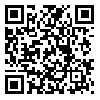Volume 1, Issue 1 (8-2020)
Degrad Rehabil Nat Land 2020, 1(1): 72-81 |
Back to browse issues page
Download citation:
BibTeX | RIS | EndNote | Medlars | ProCite | Reference Manager | RefWorks
Send citation to:



BibTeX | RIS | EndNote | Medlars | ProCite | Reference Manager | RefWorks
Send citation to:
Asgari H R, rashno A, bairramkomaki C, boali A. Investigation Study of Soil Salinity Mapping using Landsat Data (Case Study: Dashli Borun, Golestan Province). Degrad Rehabil Nat Land 2020; 1 (1) :72-81
URL: http://drnl.sanru.ac.ir/article-1-147-en.html
URL: http://drnl.sanru.ac.ir/article-1-147-en.html
Department of Arid Zone Management, Gorgan University of Agricultural Sciences and Natural Resources, Gorgan, Iran
Abstract: (3610 Views)
Soil salinity is one of the main desertification factors that have mostly affected the soils in arid and semi-arid regions. Traditional methods of data collection in soil studies have many problems that can be solved by remote sensing techniques. Therefore, this study was conducted to investigate the possibility of preparing soil salinity map using Landsat digital data in Dashli-borun area. In this study, 47 soil surface samples were randomly collected and after preparing the samples in the laboratory, the electrical conductivity of the saturated extract of soil samples was measured. After determining the appropriate bands to participate in the model, the preliminary results showed that there is a significant relationship between the values of surface electrical conductivity with the main band B5 and the combined bands SI1, SI2 and SI3 at the level of 1%. Regression models were used to model soil salinity.Accordingly, the data were divided into educational (80%) and evaluation (20%). The results of evaluating the models based on indices the square root of error and mean error showed that multivariate regression models have higher accuracy than SI3 regression model in predicting soil salinity. The results showed kappa coefficient and overall accuracy obtained from the two models that the multivariate regression model with the percentage of kappa coefficient (71) and overall accuracy (73) had a higher agreement with the salinity of the region. The results showed that the highest soil salinity is in the northern and eastern regions. This study showed that in the Dashli-Borun area, the use of TM digital data and its derivatives can be effective in zoning salinity changes. By completing, expanding and expanding the findings of this study, it is possible to zoning the lands using satellite images and minimizing the need for sampling.
Type of Study: Research |
Received: 2020/09/15 | Accepted: 2020/11/8 | Published: 2021/01/5
Received: 2020/09/15 | Accepted: 2020/11/8 | Published: 2021/01/5
Send email to the article author
| Rights and permissions | |
 |
This work is licensed under a Creative Commons Attribution-NonCommercial 4.0 International License. |






